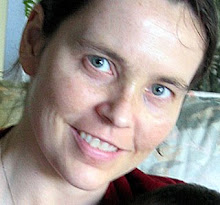
I recently spent five days on an optional rotation at a summer camp with the American Diabetes Association. Here's what day one was like:
Early departure at 6:30 am. I carpooled with Maria, who just finished the Bastyr internship in June and is about to take the RD exam (good luck, Maria!). Besides having Bastyr in common, Maria and I have a connection through a very good friend of mine. Maria's husband is a childhood friend of my friend's husband. Five degrees of separation.
I actually brought my Krause with me because I hadn’t had a chance to read up on MNT for diabetes. When I told Maria I’d brought it she just laughed. She said that the diabetes experience at ADA (American Diabetes Association) camp was barely touching the tip of diabetes, and she should know because besides having done camp before, she’s a Russian-trained endocrinologist with extensive experience with diabetes.

The drive and ferry ride were uneventful, except in how charming and rustic Vashon Island was. We arrived at Camp Sealth just in time for breakfast. And what do you imagine was being served to the Type I diabetics in the dining hall? Belgian waffles with syrupy strawberries and whipped cream (oh, but the syrup was sugar-free!), an assortment of refined cereals like rice crispies and corn flakes, and fresh fruit. The protein was bacon. The fresh fruit was nice, but I had expected there would be a greater attempt at providing more blood sugar-friendly food for our beleaguered little ones.
I should clarify a couple of things before I go on. This was not a camp for diabetics. This was a regular summer camp session with special provisions (i.e., the presence of the ADA staff) for kids with diabetes. We were told at orientation that about 70 kids out of 300 would be Type I diabetics. Secondly, the primary goal of the ADA in this setting was to keep the ADA kids safe while they had a "normal" summer camp experience. Apparently, this included eating the same non-food as the "normal" kids. The only special provision for the kids made by the kitchen was to provide sugar-free syrup for the waffles, and sugar-free canned strawberries for the strawberry shortcake. I hope I don't have to point out the irony of this to you...
Interestingly, special care was taken to provide options for the four vegans/vegetarians at camp, and for the one child in camp with a severe peanut allergy.
The rest of the day was a blur of meeting the ADA staff (most of whom would be replaced the next day by a new crew), getting the lowdown on the life of a camp intern from Misha, another Bastyr intern, and learning to carb count… oh joy! My preceptor would not arrive until late that evening, so Misha’s preceptor, Susie, helped to orient me.

By mid-afternoon I had a fair idea of what my days at camp would look like:
There would be two ADA staff locations at camp, called “pods.” ADA kids would come to one of the pods before each meal to look at a sample plate of food for that meal, tell us what and how much they were going to eat, and we would count up their carbs. The kids would then do a finger stick and get their insulin dose based on the carbs they planned to eat and their blood glucose level. The insulin dose was decided by the providers, most of whom were nurse practitioners, and administered by nurses or by the kids themselves.
Other than mealtimes, ADA kids would come in if they weren’t feeling well (and go through the same drill except for the carb counting), and at bedtime so that they could get a snack or an insulin dose to take them through the night.
These were my main duties: 1) Prior to every meal, get the menu and do a carb count based on product labels or carb counting books; 2) Plate up reference portions of food for the kids to look at; 3) Write the menu and carb counts on a board; 4) Go through the menu with the kids before each meal, tallying the amount of carbs they planned to eat. Other than that, I would have a chance to supervise the kids doing their finger sticks, participate in midnight blood sugar checks, and wear an insulin pump loaded with saline for a day or two.
Sleeping arrangements: I slept in one of four beds in an area behind a partition at the back of the main room of the ADA cabin. Since this was open to the front of the cabin, I knew there would be no rest for me until midnight checks were done and all the lights were off. I’m a very light sleeper so I always come prepared with ear plugs and eyeshades, but the effects of these were dulled by my racing mind, an awareness of stealthy activity in the next room where staff members were passing the time until midnight checks (more on this later), and SNORING! I counted three different snorers that night, one of them so loud that the noise penetrated my ear plugs (rated for 30 decibels) from a room down the hallway and through a closed door.
Everyone quieted down within a couple of hours and I did eventually fall asleep, but I had a long time to mull over my day and ponder how a snoring person could sleep with such a thunderous sound vibrating through their own skull. ZZZZzzzzzzzZZZzzZ.

No comments:
Post a Comment